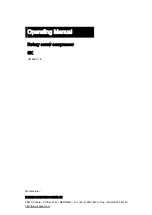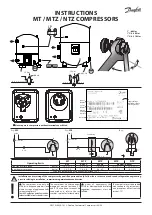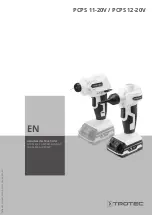
25
4 - TROUBLESHOOTING
Gauge pressure
indication
Cause
Confirmation method
Action to take
Both discharge and
suction pressures are
high
Excess of refrigerant
Connect gauge manifold
to cycle
Recover refrigerant, then
refill with the right
amount of refrigerant
Condenser cooling
malfunction
Condenser becomes
muddy and fins are
clogged and collapsed.
Defect of cooling fan
rotation. Malfunction of
fan motor for condenser
Clean up, hand repair of
fin and replacement
Misaligned Expansion
valve or thermal sensing
tube of the Expansion
valve is not fit on
regularly. (Excess
opening of the
Expansion valve)
Defective refrigerant
flow control, the thermal
sensing tube is not
closely in contact with
the evaporator pipe
Adjustment or
replacement
Air mixed in refrigeration
cycle
Just after compressor
stops, discharge
pressure will come
down immediately to
0.19 - 0.29 MPaG (3 - 4
kgf/cm²)
Evacuate air from cycle,
the charge with the
adequate amount of
refrigerant
Discharge pressure is
high and suction
pressure is low
Refrigerant cycle is
clogged between
compressor and
condenser
Appreciable temperature
difference at the
clogged location
Clean up inside the cycle
or replace the part
Discharge pressure is
low and suction
pressure is high
Defect of the
compressor valve or
gasket
Discharge and suction
pressures balance
immediately after the
compressor stops.
(Defective compression
of compressor)
Replace the compressor








































